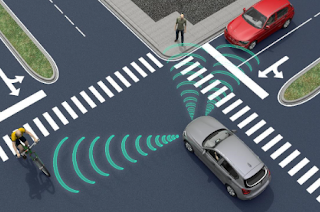A new study finds that self-driving vehicles appear to be safer than human-driven cars, with two exceptions.
The research team found that human drivers are safer when light levels are low or when the vehicle is turning in a certain direction (right or left). This is due to the challenges faced by autonomous vehicle sensors in these situations.
The study's authors, Mohamed Abdel-Aty and Xingxuan Ding, analyzed California car crash data from 2016 to 2022. They then compared the safety of self-driving vehicles versus human-operated cars.
The researchers found that self-driving vehicles were generally safer than those driven by humans in most circumstances. In other words, they found that a self-driving car was less likely to crash than a human-driven car under similar driving conditions.
They found that human-driven cars are safer at dawn/dusk and when turning, especially since self-driving vehicle sensors struggle in low-light conditions, such as sunset or sunrise, and during complex cornering situations.
By identifying vulnerabilities in self-driving vehicles, manufacturers will be required to address these issues, improving overall safety, the researchers point out.
They suggest that further studies are needed to ensure continued progress in self-driving vehicle technology, especially given that most major automakers intend to phase out human-driven cars in the coming years.
The study was published in the journal Nature Communications.




Very informative.
ReplyDeleteGood
ReplyDeleteVery good information
ReplyDeleteVery informative
ReplyDeleteVery informative
ReplyDeleteInformative
ReplyDeleteGood
ReplyDeleteNice
ReplyDeleteGood
ReplyDeleteNice
ReplyDeleteInformation
ReplyDeleteInformative
ReplyDeleteInformative
ReplyDeleteAmezing
ReplyDeleteInformative
ReplyDeleteCool
ReplyDeleteCool
ReplyDelete